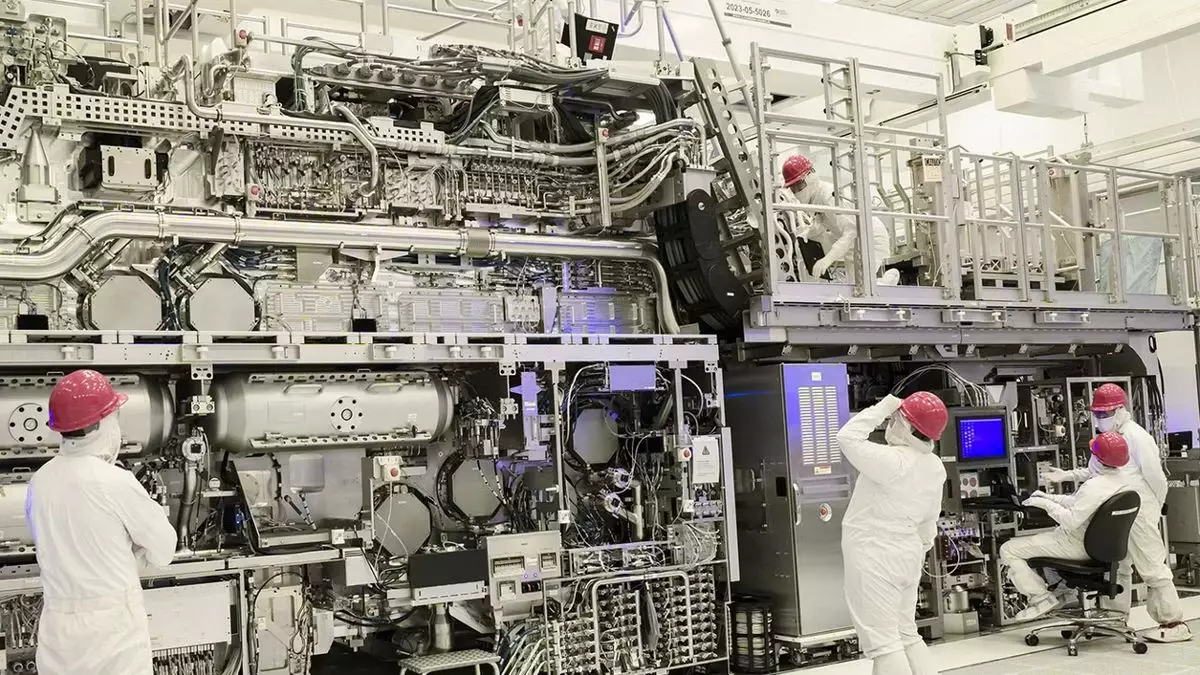Intel’s journey through microprocessor technology has been a rollercoaster ride of innovation and challenges. With its recent announcement that the 18A chip production node is “now ready,” the chipmaker hints at significant advancements in computing technology. However, as is often the case with large-scale technological innovations, the implications for consumers and the broader industry merit a thorough examination.
The announcement surrounding the readiness of the 18A node raises several questions. On one hand, this new production technology promises to enhance performance and efficiency, boasting improvements in performance per watt by up to 15% and a potential 30% increase in chip density compared to the preceding 3 process node. In an age where energy efficiency and compactness are paramount, these enhancements seem highly promising. Yet, the timeline remains an enigma. Although Intel’s intentions signal volume production later this year, genuine consumer access to 18A-powered devices is still projected for early 2026.
This apparent disconnect between announcement and actual consumer availability can breed skepticism. One might argue that while the underlying technology is crucial, the inability to deliver chips promptly raises doubts about Intel’s operational acumen.
The journey towards the 18A node is part of Intel’s ambitious “five nodes in four years” strategy, a roadmap that began with Intel 7 and progressed through several iterations, including the Meteor Lake mobile CPU, which utilized Intel 4. This rapid succession of nodes aims to reinvigorate Intel’s competitive position, especially against leading manufacturers like TSMC.
However, analyzing these nodes reveals a less straightforward narrative. For instance, Intel 4 was more a rebranding effort than a truly new technology; the shifts from Intel 3 and potentially even back to Intel 20A have created some uncertainty. In essence, while the 18A node may represent significant advancements, it also highlights Intel’s struggle to bring genuinely new technologies to fruition consistently.
Intel’s current marketing push appears to cater more to potential foundry customers rather than merely promoting its own products. The backdrop of advancing technologies in chip architecture, such as the introduction of RibbonFET technology, which allows for tighter control of electrical currents, adds to the complexity. It is essential to evaluate how these technical advancements translate into tangible benefits for consumers and businesses alike. While improved performance metrics are enticing, the real test will lie in comparative evaluations against competitors like TSMC and the efficacy of Intel’s supply chain in realizing these promises.
Moreover, the impending launch of Clearwater Forest, originally slated for 2025 but postponed to 2026, raises eyebrows. What could be viewed as a delay may also indicate a lack of confidence in the new processes. In the volatile and rapidly innovating landscape of chip manufacturing, such delays could have far-reaching consequences for Intel’s market positioning.
If Intel’s 18A node delivers on its promised features, it could well provide a significant competitive edge. With state-of-the-art technology such as backside power delivery and advanced SRAM density, Intel may be able to carve out a niche for itself in an increasingly crowded market. These innovations allow for reduced interference and increased efficiency, potentially setting a new standard for performance in high-density chips.
However, caution is warranted. The weight of Intel’s own history, particularly the CEO’s insistence that he “bet the whole company on 18A,” suggests that the stakes are extraordinarily high. The chip industry operates on razor-thin margins, and if the 18A fails to perform as expected, the ramifications for Intel could mirror previous downturns, not just in terms of financial loss but also in market perception.
As we look toward the future, Intel’s announcement of the 18A node embodies a notable paradox: it is both a beacon of hope and a bastion of skepticism. The technical benefits appear substantial, but the operational capability to deliver on those promises remains to be seen. Consumers and industry observers alike are left contemplating whether the forthcoming advancements will usher in a renaissance for Intel or merely extend a pattern of unmet expectations. The broader landscape of competition also hinges on Intel’s performance, which makes the impending release of 18A a pivotal moment in the chip manufacturing narrative.

